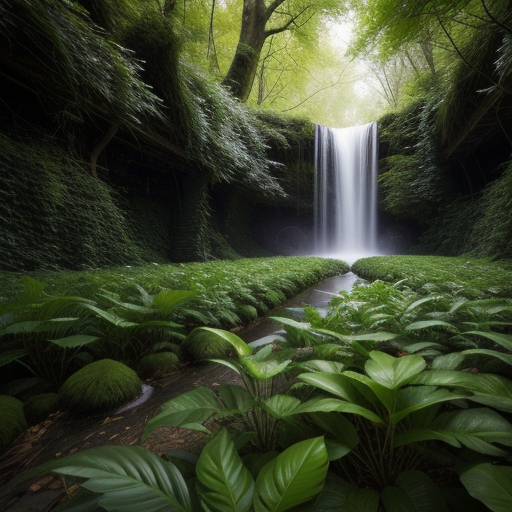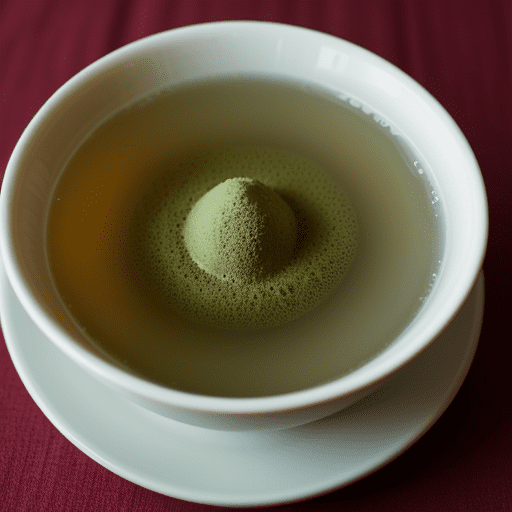Exploring the Unique World of Green Chartreuse: History, Flavor, and Uses

More than a vivid green, mystical elixir of life, Green Chartreuse is an entryway to millenia-old monastic traditions paired with befits from traditional distillation. Ideal for after dinner consumption Green Chartruese: Introduced in 1838 this French liqueur is produced by Carthusian monks, they claim to know the plants used and how it’s made guaranteed no one else does. This green herbal elixir is instantly recognized by its seafoam color, and unique flavor composition of more than 130 plants, herbs & flowers. The steep and recipe for Green Chartreuse are closely guarded secrets known only two any more than a handful of monks in the same time. More than mere backstory, uses for the stuff range from timeless cocktails and culinary classics to modern mixology twists. A true examination of Chartreuse offers a glimpse at an interpretation in green, as well as its historical perspective and the sensory experience that both fascinates geeks like me to no end.
Historical Background
Green Chartreuse: Carpoleptic Herbal LiqueurLauded as a legendary herbal liqueur, Green Chartreuse has been around for quite some time — dating back to 1605 when Carthusian monks in the French Alps obtained an ancient manuscript that detailed an “Elixir of Long Life. For the next hundred years, monks would perfect the 130 plant recipe. Get the details of our recipe for The Chalice: In fact, “Elixir Végétal de la Grande Chartreuse” was perfected in 1737 with Green Chartreuse finally coming into its classic form by 1764. A brilliant green liqueur, chartreuse became renowned across Europe for its flavor and purported curative powers. Even after political interruptions like the French Revolution and monks being forced out of France in 1903, Green Charetreuse was still produced in clandestine spots adding to its mystic appeal. Green Chartreuse has remained an iconic emblem of both the monastic tradition and centuries-old craftsmanship in general, with only a few Keptapsitsin brothers ever to know its complete recipe at any given time.
Origins of Green Chartreuse
Green Chartreuse, a unique green-hued liqueur praised for its elaborate taste and background laden with history. The incredible spirit was originally produced by Carthusian monks in the early 1700s using a manuscript entitled “Elixir of Long Life” given to them already in 1605 by François Annibal d’Estrées. The recipe was complicated, and included 130 different herbs, plants & flowers.
Forrest asks whether the monks, who lived in a monastery called Grande Chartreuse high in the French Alps and spent years decoding their 130-ingredient complex formula for Green Chartreuse until they finally found its ideal expression around 1737. An early interpretation of this liquid, somewhat a specific medicinal tonic was known with the monastery walls however finally that potion started to be consumed just outside of them thus shining upon it is singular and unique components. The monks’ dedication to old-world, hands-on production methods combined with their near absolute secrecy in not releasing the exact botanical make-up are why Green Chartreuse is a mystique icon of spirits.
Development through the centuries
The rise of Green Chartreuse is a legendary story that traces its history and monastic roots back to their inception centuries ago. Dating back to 1605 when French monks received a cryptic manuscript describing an elixir for longevity, it has grown over the years into that unique blend of 130 herbs and plants we know today. First made in 1737 as an elixir by Carthusian monks near Grenoble, France this army green beverage became a drink known for benefits and particular taste profile.
Production was temporarily disrupted in the French Revolution, but then it took off again penetrating into the 19th century. Although during SVID regin (1903 -) monks were expelled and an alternative production took place in Spain, but for the case with this liquor remained original recipe. Fortunately, for those that have ordered it – Modern Green Chartreuse retains its semi-mythical history and the same ritual-encrusted making method. Its recipe is shrouded in mystery and only two monks ever know the synthesis leading to a flavor still unblemished after centuries, quintessentially captivating connoisseurs as well as casual enthusiasts.
Key moments in its history
This idiosyncratic herbal liqueur has a history tracing back to the Grande Chartreuse monastery in France. Its roots date back to 1605 when monks were given a parchment containing the recipe for an “Elixir of Long Life.” Yet, not until 1737 under the direction of Brother Jerome Maubec did a perfected recipe make larger production possible. The French Revolution in 1793 forced the Monks to escape and yearly production was discontinued. Upon their return in 1816 they moved into the method producing yet again. As a result of religious orders being banned in France during the early 20th century, most monks left to Spain and resumed production until their return back home at Pordoi in1940. The intricate 130 herbal and botanical knowledge of the liqueur has been handed down to numerous monks over time with only a few actually knowing its true recipe at any one point in history. Today, the Green Chartreuse brand is internationally recognized as one of grace and tradition.
Flavor Profile
Chartreuse Verde, un enigmático licor francés que se destaca por su complejidad y sus tentadoras notas de 130 especias. The spirit has been created by Carthusian monks for more than 400 years, and it packs a punch at some very noticeable 55% alcohol. As our first taste, the herbal intensity is beyond exhilarating with hints of mint to juniper and cloves all entwined within themselves. Instantly afterward is a peaceful concatenation of sweet and sour notes, reminiscent alike to those within citrus fruits but with overtones of thyme weed or rosemary. The finish is never ending with a whisper of warmth and spice, finishing up floral yet still alive on the palate. With its complex flavor profile, Green Chartreuse is well-suited to cocktails that feature layers of flavors — a spirit backbone provides the base note while Green Chartreuse offers an almost electric topmost layer in standbys such as The Last Word or even on its own. The unique amalgam of botanicals in Plymouth Gin trend bartenders and fans to explore its depth, as barrelsweetnessan old friend invited one back for an extended visit.
Essential ingredients
The iconic Green Chartreuse, prized for its rich history and robust flavor from a singular combination of ingredients Produced by Carthusian monks in the French Alps, after a secret 18th-century recipe that remains closely guarded and reportedly known to only two monks at any time, It gets its signature green color and complex flavor from a secret blend of around 130 herbs, plants, and flowers.
Hyssop, arnica root and leaves, wild angelica seeds or rhizome (wild celery connection) are a few examples of the core ingredients in this complex product which boasts different layers to its flavours as well due to these medicinal herbs. An alcohol base of botanicals is slowly aged in American oak casks, adding to its complexity. Because of the combination and proportion between all these botanicals, it gives GC an amazing sweetness-spicey mix with a strong earth note (literally). So, this special formation is not just the characteristic of its ancient past but also enriches its utility in cocktails, gastronomic preparations as well as a shot drink.
Tasting notes
Green Chartreuse is inimitable, deep and intricate — the colors of an herbal tapestry that virtually defy replication. Its tasting notes often focus on its vivid green color and strong herbaceous scent, initially reminiscent of pine, mint or anise. It sips very bold with a sweet and bitter profile dominated by some botanicals on the palate. Further exploration shows the liqueur also holds spices such as cloves, coriander and cardamom — tying with citrus peel essences finessed by fennel.
While these robust flavors are in good taste, there is a mild sweetness that adds balance with hints of honey and sugar cane. It is smooth but hot in texture, due to its relatively high alcohol content, it blends well with the botanicals and evaporates slower for a long warm pungent aftertaste. All can help reveal new subtleties, and thus keep Green Chartreuse a changing experience. Savoured neat, served on the rocks or as a cocktail ingredient — its diverse character presents an exciting ride of flavours for the aficionados.
Comparison with other liqueurs
Green ChartreuseNot content to play second fiddle, Green Chartreuse earned high marks for its eccentric history and distinctive flavor profile. From the 18th century and still with a recipe of about 130 plants that is kept in total secrecy (it was made by Carthusian monks). That herbal facet sets Green Chartreuse apart from something like Bénédictine, which — while an aromatic liqueur in its own right — leans sweeter and more floral.
Where Green Chartreuse offers a vibrant, vegetal punch to the amari category, Fernet-Branca brings an acrid bitterness and medicinal notes that catered more closely to another segment of palates. Other elements like Grand Marnier (cognac combined with orange essence), tease out the citrus notes in Green Chartreuse. Absinthe, near cousin to a summer type of Green Chartreuse though it is described as one with a little less anise and more wormwood, can give the martini drinker something new.
Green Chartreuse, with that alcoholic wallop (55% ABV) and complex flavor profile you only get from 130 ingredients is a standout in cocktails as well being used so frequently in classics such as the Last Word or to finish off modern creations. It’s depth and history stand apart from the rest, forming an undeniable legacy for enthusiasts and barkeepers; it is a spirit of great importance that never loses its touch.
Production Process
The methods of production are held as a closely guarded secret, shrouded in mystique and hundreds of years old, with the first dating back to early 18th Century. The actual recipe is only known by two Carthusian monks any given time, and are sworn to secrecy. That process starts with the 130 different herbs, plants and botanicals — chosen in exact measurements based on the original manuscript. This is followed by maceration — in high end alcohol this time, to bring out the natural flavors of these ingredients and their potent qualities. Once combined, it is distilled and left to mature in the monastic cellars for years at a time which adds that extra depth of flavor. The vibrant green color of the final spirit is entirely due to chlorophyll from botanicals. It is generically unique with no added flavor or color. After blending, the liqueur is then put into bottle at 55% alcohol by volume for use in cocktails or favourite nimble food manners.
Traditional methods
Chartreuse Verte is a famous French liqueur produced in accordance with the ancient recipes dating from 1605. The ancient recipe is under the custody of Carthusian monks at La Grande Chartreuse Monastery in French Alps. The 130 herbs, plants and flowers that make up the liqueur are a secret more closely guarded than even Google’s search engine algorithm.
The process starts with a painstaking selection and drying of these botanicals that are later macerated in fine spirit, responsible for the extraction if their flavors. The herbal blend is then distilled through a laborious copper pot still distillation process, which works to retain the layered flavors of cherry and an aromatic eucalyptus scent. Following that, the distillate is aged over many years in oak casks so all these flavors can merge and mature.
Only two monks supervise the whole production process, knowing and preserving the recipe to uphold tradition in distilled beverage preparedence. This commitment to quality and secrecy is what has made Green Chartreuse somewhat of a holy grail, preserving the mystique (and superiority) over many years.
Modern advancements
The way Chartreuse was produced, brought to market and enjoyed has evolved quite a bit in the last few decades with modern advances. Made in the past with expertise, usually reserved for a certain sect of Carthusian monks in France, has been shrouded by them and remains protected as secrets involved. Yet, thanks to technological improvements in the production process of this classic flowery booze. These cutting edge distillation methods and better storage conditions maintain the unique so-called 130 botanical complex flavor profile from batch to batch.
Beyond the realm of production, the digital age has also changed how Green Chartreuse is sold and imbibed. However, cocktail culture disseminated through online platforms and social media allows new global audiences to enjoy delicious Green Chartreuse cocktails. Beyond that, bartenders and mixologists use these media for sharing recipes and techniques to further solidify the status of this ancient liqueur in contemporary mixology. Moreover, the emergence of e-commerce has facilitated access to Green Chartreuse as one can now buy a bottle pretty much anywhere in the world and therefore compare it fully tailored sight unseen.
Quality control and consistency
Green Chartreuse is a sticky subject, as this venerable liqueur dates back to the early 18th century and quality control has always been its number one priority. The Carthusian monks start the care-taking and detail-oriented practice by preserving the original over hundred years old recipe comprised of 130 diferents herbs, plants and flowers. Because these ingredients are sourced carefully to meet exacting quality standards( necessary for maintaining l-theanine and chlorophyll) the desirable bouquet of herbs in just a little different that other herbal combinations.
This is after blending and aging in near secrecy at the Grande Chartreuse monastery in Voiron, France. Part of the monks’ grade is quality control, influenced in particular by distillation and maceration that require careful monitoring because even small variations can have profound implications on aroma and taste.
In addition, the liqueur is matured in oak casks for many years so that its complex balance of flavors deepen and develop. Testing at regular intervals during this time guarantees that every batch will meet the high standards required for a Chartreuse. Large barrel aging takes around six years and automation is minimal; instead, they rely on the monks’ know-how and sensory tastings (human intervention) to ensure an identical end product that connoisseurs worldwide have come to love.
Versatile Uses
The sublime Green Chartreuse is a wonderful ingredient in both food and drink. This gives it a botanical flavor profile which strikes of more than 130 herbs and makes all the difference when working on some dishes or drinks. A cornerstone in mixology, this spirit gives great body to expand drinks like the Last Word or Bijou when strength has not worked with cask.ostream glasses off as intended such for these examples and also accents Chartreuse Swizzle as a classic favorite of nearly all users. Its flavourful, herbaceous presence provides depth and complexity to an array of both classic and modern libations that bartenders frequently turn to.
Even beyond the bar, it is an excellent ingredient for cooking with Green Chartreuse. A little might find a home in the sauce or marinade, perhaps showing up as an ingredient to bump flavor in one of dessert. Used sparingly, for example, a drop or drizzle of Green Chartreuse can turn an ordinary sorbet/choc ice/ choco ganache into something exceptional. It can transform herbaceous vinaigrettes or fish glazes, and even just a few drops make an impression in savory dishes. With its multi-faceted uses the point is Green Chartreuse serves as not only a friend to mixologists but culinary experts alike.
Classic cocktails featuring Green Chartreuse
Its unique herbal flavours are derived from these ingredients and Green Chartreuse tends to highlight them even more, which you can experience in the following classic cocktail recipes with a special twist. Among the most famous is: **The Last Word**, a 1-oz cocktail that originated during Prohibition, marrying Green Chartreuse to gin, maraschino liqueur and fresh lime juice. The payoff is a well-rounded refreshing drink layered with intricate herbal flavors. The **Bijou** is another famous drink, featuring Green Chartreuse stirred into gin and a dollop of sweet vermouth for depth; it’s finished with orange bitters (still really interesting in 1930) and lemon or orange peel. A paradise of a cocktail, the **Chartreuse Swizzle** mixes Green Chartreuse with pineapple and lime juice along with falernum; it is strained over crushed ice, then garnished proudly with some mint. The cocktails, in addition to showing off all the ways you can use this liqueur, honor its history — both as a higher proof spirit and for how it plays nice with simple drinks (old-school) and complex ones.
Culinary applications
A herby and aromatic liqueur made by the Carthusian monks since 1737, Green Chartreuse graces many a kitchen. With more than 130 different herbs, plants and flowers infused with the complex flavor profile provides a versatile ingredient in sweet as well as savoury dishes. On the savory side, flavorful Green Chartreuse can also be used to brighten up glazes or marinades for foods like chicken and pork which benefit from its herbal qualities. It also makes a great base when deglazing pans, if you can ever avoid drinking it all. And in the world of sweets, it is a perfect companion for chocolate or citrus flavors and fruit — replacing what has been known to be sugar where you can find it, they are turning conventional desserts into an unparalleled taste battalion. Bartenders and chefs everywhere love this unique, powerful flavor — they frequently use it to make fancy cocktails or show-stopping desserts. Green chartreuse is one of the more fascinating things to come out of green gastronomy in recent years., thanks both to its mixability and a memorable origin tale
Unique pairings and serving suggestions
Special Spirits: Green Chartreuse has a lush, herbal taste ideal for creative pairing and presentation. Farmed from 130 botanicals, its uncommon taste pairs well with other ingredients making it a very adaptable spirit for cocktails and food.
Because in a cocktail, Green Chartreuse makes the perfect companion for gin and lime (Last Word anyone?)The herb sets off the botanicals against some zingy citrus. A more nuanced gin, it lends gravitas to spirit-forward drinks (like the complex Bijou) as smoothly as vermouth and orange bitters. The gingersnap syrup adds a little something extra to hot chocolates piled high with whipped cream, as well coffee drinks that are just the slightest bit more warming and comforting.
In the world of food, Green Chartreuse can deglaze a scallop or duck breast to dress on top for savory depth and herbaceousness. For dessert pairings, its mild herbal notes play together with sweet and rich flavors to boast vanilla ice cream when poured over or make their way through chocolate truffles.
Using it in your cocktail or cuisine allows you an exciting opportunity to root everything that happens next, and at the same time add a hint of green centurial mystery with modern twist.
So what have we concluded?
In conclusion, what all this means is that Green Chartreuse is more than just a liqueur—it’s an homage to 400+ years of monastic effort and skill. Its fabled history, interwoven with the obsessive quest of a group of Carthusian monks to chase perfection forever,” adds an allure for every bottle. Boasting a unique complexity of flavor, one with mature herbal and spice notes as well floral tones it remains an interesting drink to rediscover for any mixologist or enthusiast. A wonderfully unique and adaptable drink, served on its own as a digestif or mixed into classic cocktails and modern dishes alike. A deeper delve towards its colourful history, an acquired taste examination and putting it to best of the use will further reveal how captivating this green elixir can be perhaps for good reasons; toujours. Green Chartreuse, then is enjoying a drink but also partaking in a piece of living history and craftsmanship.







